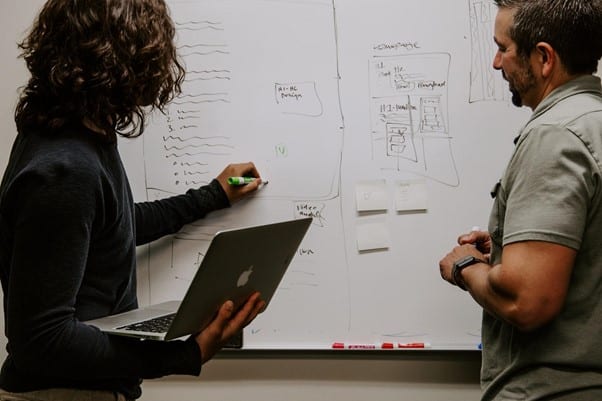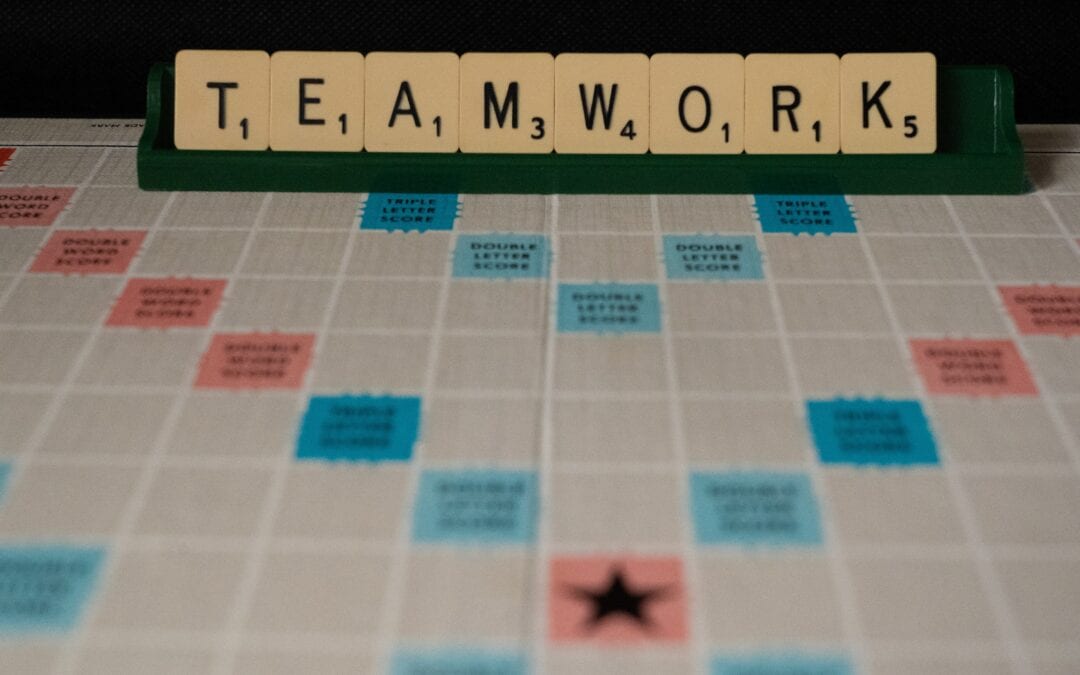|
|
Whether your team consists of virtual nomads or people who work from a fixed location, it’s important that you invest time in managing, supporting, and developing your team. This is something that many companies neglect – either because they feel they are too busy, or they think the costs are not worth the investment.
However, team building is critical to business success and has many benefits. Team building for remote teams is particularly important because staff often feel disconnected, lonely, and unengaged with their teammates and managers. Many remote teams may never even have met each other before, and team building events are one way to bring staff together and offer a platform for dialogue and engagement.
Developing a team building strategy can help you to identify staff needs and can keep teams motivated. If organised well, a team building event can assist employees in overcoming some of their work challenges and struggles, and can enhance happiness, morale, and productivity.
Team building is not only about helping staff to collaborate and build social networks. Many remote workers struggle with managing a work-life balance and that can have a direct impact on their productivity, performance, and their commitment to the company. So when teams are given the opportunity to take time off work and engage in social activities, it may help them to enjoy their work more, relax, and realise their true potential.
Below we explore some of the specific benefits of team building activities for remote staff who are working around the world as part of a virtual office. We also include some tips on creating a remote team building strategy and discuss the importance of measuring the impact of your team building events.

Why team building is so critical for virtual teams
There are numerous benefits to organising team building activities for virtual teams. We’ve listed some of the top reasons below.
1. Builds relationships based on trust
If teams need to collaborate for work, then they need to know they can depend on each other, that they can ask questions or ask for help, and that they can collaborate easily. By meeting and engaging with each other, virtual teams have the opportunity to build relationships and foster trust.
2. Enables communication
Teams that know each other, generally communicate much better and discuss issues more easily, fel more able to come up with solutions and ideas, and are more inclined to ask questions of each other if needed.
But employees need to know what the other staff are working on, what their roles are, and that they are able to engage with other staff members in order for open and collaborative discussions to take place. That’s why it’s vital that managers are actively involved in creating opportunities for team building and social networking exercises.

3. Enhances productivity
If staff feel that they are connected, empowered, motivated, responsible, and that they can collaborate towards common goals, then they generally perform better. More productive teams usually achieve better results and this translates into business success. Therefore, if you’re thinking that team building may be too costly – compare that with the cost of inaction!
4. Encourages collaboration
When a team is encouraged to connect and engage, they are more likely to collaborate. And teams that collaborate are often more efficient. Communication and collaboration also encourages the sharing of ideas and knowledge and creates a work culture of support and encouragement which is good for morale.
5. Fosters creativity
When people come together to share ideas, they often generate more ideas and test them out more rigorously than they would if they all worked alone. Everyone has a different perspective and different life experiences, which makes diverse teams well suited to being very creative.
Team builds that encourage everyone to share their ideas and perspectives can be quite rewarding – not only for teams, but also for employers and managers who are looking for new business models, new business ideas, or new business approaches. Creative approaches to problem solving can also be encouraged through well-designed team building activities.

6. Encourages understanding, inclusivity, and empathy
There’s a global trend towards more inclusive, more diverse and more equal workplaces. Team building exercises can highlight understanding, compassion, and empathy for diversity and differences which goes a long way towards creating equality and acceptance in the workplace.
7. Helps to resolve conflicts
Sometimes conflicts arise in the workplace because of misunderstandings and different work cultures. By bringing teams together for team builds, staff have a chance to build bonds, network, and get to know each other on a deeper level. This can help to avoid conflict and build understanding – and team building events can also directly address conflicts and help provide staff with constructive skills to resolve them.
8. Reveals hidden talents
Sometimes by giving employees the opportunity to engage in ways which hadn’t been explored before, you may discover hidden talents and natural leadership skills that you never knew existed. These opportunities can also reveal team dynamics and can help you to plan how you pair specific employees around specific tasks and projects.
9. Teaches new skills
There are many valuable lessons and skills that can be imparted by taking part in activities that involve having to figure out solutions together and how to solve problems in a constructive, efficient and time-sensitive manner. Team building activities can improve staff capacity to deal with challenges, actively listen, innovate to solve problems, and teach them how to improve the ways they work together as a team.

10. Shapes the work culture
All companies have their own unique work culture and values. This is something that develops over time and can be influenced and changed. When you get staff members to interact, collaborate, and work together constructively, you can actually help to shape and enhance the work culture. This can in turn improve performance, efficiency, and tolerance.
11. Boosts motivation
When people feel that they are part of a team, that they are supported by their colleagues, and that they are a valuable member of a remote but connected workforce, they are more likely to feel motivated to perform optimally and engage constructively.
12. Makes staff feel connected and supported
Many remote teams don’t even meet each other online and never get the opportunity to engage. That can make them feel quite disconnected and lonely. By organising opportunities for staff to meet informally and get to know each other, find out what roles everyone has at work and what opportunities there are for working better together, people feel more supported, engaged, and included. This can go a long way towards improving morale and making staff feel that they are part of a united workforce with shared goals, values and aspirations.

Creating a team building strategy for your remote workforce
There are so many options for how to organise a team build event, and there are also a myriad of ways to integrate team building opportunities into daily work routines. But, in order for these initiatives to be successful, you will need to carefully plan these events and have a clear vision of what you want to achieve. Here are some top tips for creating a team building strategy.
1. Get input from your employees
Get your staff, or select members of staff, involved in brainstorming ideas for an effective team building event. Try to select people onto the planning committee who are good at socialising and networking – and make sure that you include diversity so that the ideas they come up with are inclusive and representative.
It’s also good to select people who will be enthusiastic about team building to be part of the planning team. The event planning process may be helpful in itself at highlighting how engaged your staff are. Once you have some ideas tabled, you can get staff to vote on which activity they would most like to do, or you could implement the activity that your planning team have co-created.
2. Ensure inclusivity
During the planning process, you should ensure that the organising team takes account of the different situations that your remote team members experience. You should specifically consider:
- Different time zones for your employees and perhaps do a poll to see what meeting time is most convenient for everyone;
- What style of meeting most staff prefer as cultural and personality difference may mean that some team members have strong preferences for specific styles of events;
- Family life and whether people need to consider family commitments before being able to confirm attendance at an event (for example if it is on a weekend, or if staff will need to travel to attend). That’s another reason why there needs to be ample advance warning about events so people with families can schedule babysitters or childcare, for example;
- Seniority and how long people have worked for the company should also be considered – some people may already know the company culture quite well and many of the staff, while others don’t. Put yourself in the shoes of a new member of staff who might not know anyone and who could benefit from introductions. It’s good to get all members of staff taking part in all activities – including senior managers and business owners.

3. Do something different
You will need to get your creative thinking caps on to find a team building activity that people haven’t done a million times before. Otherwise they may get distracted or bored, and it could also reflect badly on your brand. Try to align the activity you choose with the ethos and culture of your staff and company. You might decide on a talent show, a virtual pub quiz, or a virtual treasure hunt.
4. Measure the impact of the team build
It’s important to review the impact of the team building activity and to find out afterwards what employees felt about the process. This is especially important if you plan to organise team builds again in future. Try to create an open and accommodating atmosphere where employees feel comfortable making constructive criticism – perhaps by way of an anonymous post-event survey. As you strive to meet employee needs and show your commitment to making their voices heard, you will help to build their respect and trust.
In order to adequately assess the success of your team building event, it’s a good idea to establish some baseline data during the planning phase. These indicators could include things like how many days employees were generally absent from work, what your staff turnover rate is, what your teams’ productivity rate is, and how happy and satisfied most of your customers are. You may also want to observe team dynamics and how much time is usually wasted by miscommunication. Furthermore, you may want to identify areas of weakness within the company that needs to be improved.

Team building activity ideas
Virtual teams can be brought together occasionally for in-person team building events. These can be quite costly and depending on everyone’s personal circumstances may also be quite challenging to attend. Luckily there are a host of incredible virtual team building options – some formal activities that can be hosted by external companies and other types of informal activities that can easily be implemented on a daily basis like virtual coffee hangouts.

Final thoughts on team building for remote teams
There are multiple benefits to hosting regular team building activities that provide employees with a chance to get to know each other better. These include building trust, enhancing the flow of communication, fostering greater levels of creativity, and ultimately enhanced productivity. These benefits can have a great impact on the success of your business and are good reasons to invest time, money, and resources in developing, supporting, and connecting your remote teams.
Not all team building activities are equal – you need to carefully plan them to make sure that they are successful and that they achieve the desired results. It’s advisable that you get your employees involved in the planning process, to get their support and buy-in and also their input into activities that they feel they’d enjoy and benefit from. It’s also important to prioritise inclusivity and equality, taking account of the different needs among your staff. Once you’ve created a team building strategy, and implemented the plan, it’s important to also gather feedback from staff so that you can constantly adjust and improve upon your strategy.
While professional advice on team building exercises can be costly, it may just help to improve team dynamics and overall productivity which could be quite positive for your bottom line.












